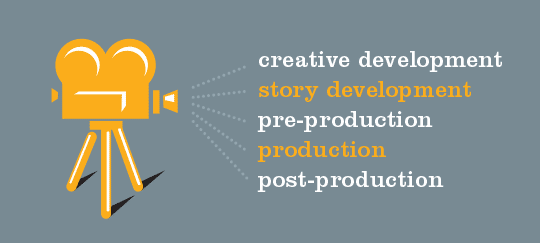
by davidlecours | Apr 4, 2014 | Branding, Content Marketing

Are you considering video as part of your marketing mix? With cameras and editing software being relatively inexpensive, it is tempting to Do-It-Yourself (DIY). But, owning a paint brush and paint does not make you a painter. I recommend leaving video production to professionals.
To get the most value from your relationship with a video professional, it’s essential that you understand the process of creating great video. So I interviewed a creative partner of ours, Chris Giles, who recently directed this video for the San Diego Green Building Council.
Creative Development
Begin the process by asking yourself the following questions:
- Why are you creating this video?
- How can we measure success?
- Who is the audience? What do they think of you now? What should they think or do after watching the video?
- Will the video be viewed online? on an HD screen in your office? projected in a theater?
- What is the budget?
- What is the availability of talent (people featured in the video)?
- What is the personality of your brand and what should the tone be of the video?
- How long should the video be?
Story Development
Just like for movies seen in theaters, it all begins with a script. The script should include:
- dialogue direction for those interviewed on camera or those providing voice-over.
- what graphics (logos, illustrations, captions) will appear on-screen
- list of possible shooting locations and duration
Storyboarding brings the written script into visual form:
- a sketch of the planned shot in column one, run time & audio notes in column two
- get executive sign-off to help decision makers visualize the final product.
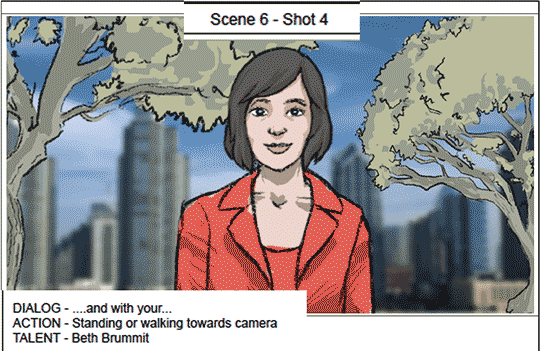
Pre-Production
This phase is mostly about planning and scheduling the shots. Location scouting should be done with one of your designers who knows which building angles are most desirable. In addition to the visual scouting, audio scouting needs to be done. Is it a noisy location? This can be good or bad depending on your intent.
Planning of your crew: a typical shoot requires 4 people: Director, Director of Photography, Lighting, and Sound. Having a stylist for hair, make-up and wardrobe is also helpful. Designate 1 person from your firm to give feedback to the Director.
Just like when creating still photographs, you’ll need owner’s permission to photograph buildings and individual permission to photograph people. Your Director of Photography should provide the necessary forms and releases.
Production
This phase will combine shooting projects and people. You’ll probably include existing still photos combined with video shot on location.
When filming people, semi-scripted interviews are more interesting than having someone memorize a script. Semi-scripted means you tell the person ahead of time what type of questions you’ll ask, but not the exact question. The spontaneity feels more authentic, and interesting. Start with easy questions and ramp up as the person becomes more comfortable being on-camera.
Don’t only interview firm leaders. Interviewing all levels of staff, clients, and end-users is more interesting. For example, a student talking about how her new classroom inspires her to learn is incredibly compelling.
When filming people, find a place that is both quiet to capture great sounds, and visually interesting in the background.
If there is a script that needs to communicated verbatim, it’s best to read it off camera as straight audio. Consider hiring a voice-over actor through a service like voice123.com to give your video a professional sound. The voice-over can be combined with b-roll or a montage of still photos. B-roll is imagery like video, still photos, maps, graphs, or motion graphics.
Post-Production
This phase is where all the elements are assembled into the final product. The editor will prepare a rough cut to show you the general direction. If you’ve signed off on story boards, then there shouldn’t be any big surprises.
Music, when played softly “underneath” an interview, or narration adds emotion. You’ll need to license, or attain rights to any music used in your video.
If you are supplying the editor with existing logos or still photos or motion graphics, you’ll want to make sure they are high resolution. This means 1920px x 1080px or greater for High Definition. To maintain brand consistency, give your editor your brand style guide so they get the colors, patterns and logo usage correct.
The last phase is output which should have been decided in the beginning. You’ll want a digital master of the video that you should archive. You may also want the video to be uploaded to YouTube, Vimeo or your website.
Conclusion
With an investment of $5k”“$35k+ for professional quality video, you’ll need to justify this expense. By understanding the process described in this post, you’ll get the most return on your investment.

by davidlecours | Feb 22, 2014 | Web & Digital

Having a “People” section on your website is essential. People do business with people they know. So it continues to surprise me that there is any question about including your people on your website. AEC marketing is built on relationships. While client prospects can have a relationship with your brand, this best occurs after an introduction by your people. In this digital age, prospects want a human connection before considering hiring your firm.
Including People on your website inspirers a lot of questions. In this post, I’ll answer those I’m asked most frequently.
Who should we include in our People section?
Those in your firm with client contact. Typically this means Project Managers and above, plus everyone in Marketing and Business Development.
What if these people leave our firm?
Then you take them off your website using your content management system. This is trickier if you have group photos. If the group photo is of 4 or more people, and one of them leaves, then keep the photo. After all, the person leaving did work at the firm at the time of the photo.
Won’t our competitors steal our best employees?
Your competitors already know who your best employees are. Seeing your staff on your website isn’t going to make them any more desirable. Your employees are already on LinkedIn. They should also be visible in the industry by developing relationships. Keeping employees off your website to prevent them from leaving the firm is a myth. Trying to hide staff from competitive predatory poaching does more harm than good.
Should we include people’s photos?
Yes. Human beings like to look people in the eyes to get to know them. Adding a face to a biography makes that person real, more authentic and approachable when a prospective client sees that person at a networking event. Nobody expects your staff to be supermodels, so don’t worry about people being them photogenic enough.
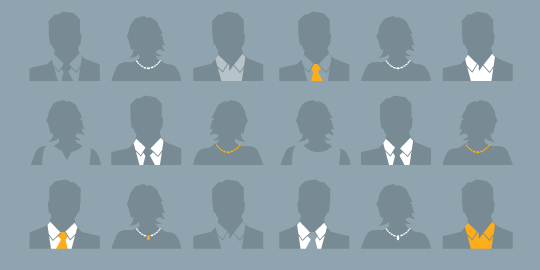
Corporate headshot or casual friday photos?
Both. Provide several photos to communicate a person’s diversity. Ultimately, photo style depends on the culture of your firm. Or even more importantly, the culture of your target clients.
What about video?
If a photo is a thousand words, then video is 10,000. Video is a powerful way to communicate what someone will be like to work with. It provides a great opportunity to tell that person’s story. Not everyone is comfortable speaking on camera like Ron Burgundy. But there are other options. Try voice-over with project photos or favorite things combined as a slideshow. Stalwart PR, cleverly used video of employees talking about the strengths of their co-workers. Think video testimonial, but instead of coming from a client (which isn’t bad either), the praise comes from co-workers.
Should we include a bio?
I prefer a short introduction to the person with the ability to “Read More” or download a PDF Bio. The download can be helpful for teaming scenarios. Simply listing a person’s achievements like a resume is dull. I recommend a story with more of a narrative arc to make an emotional connection. Another technique I’ve used effectively is an interview format like you’d see in a magazine. You include custom questions per person, and feature their best answers (as seen below in the Randall Lamb site we designed).

What should we call this section?
Call it something consistent with the culture of your firm. You can be clever, but not cryptic. It should be easy for visitors to find this section as part of your top-level navigation. I’ve seen this section titled as People, Team, Staff, Leaders, About Us (I’d reserve this title for about the firm), Leadership, Talent, Management, etc.
Having a People section on your website is another great tool for prospects to get to know, like, and trust your people, and thus, your firm.

by davidlecours | Jan 7, 2014 | Experience Marketing, Web & Digital
Pro Surfing Tips: What the New Wave of Websites Means for AEC Marketers
Surfing Instructors: David Lecours and Josh Miles
SESSION OUTLINE
Intro
- Introducing today’s surf instructors
- Social Handles & Hashtags
- CTA ““ where to get the slides, links, downloads, and handouts
Why – Why Have a Website?, Why This Session?
- A brief perspective of AEC websites
- Why this session? Why have a website?
- 4 Functions: Attract, Demonstrate, Connect, Convert
- Wipeout: The gnarliest mistakes online today.
What – What Is The New Wave Of Websites?
- A new wave is on its way””are you ready to ride?
- What’s NEW for AEC websites?
Examples, and case studies of some of the hottest trends:
Content Management Systems
Responsive Design
Simplified Navigation
Going Vert (Scrolling), Parallax Scrolling
CTAs & Lead Generation
Graphic Design Trends
- Marketing Automation
Cross-channel marketing
- Beyond text and photos: content that scores big with prospects, SEO
- Respect the environment: Today’s digital ecosystem
- Q&A, Comments
How – How To Create Your Next Website
- Ding Repair (fix it up) or New Board (whole new website)?
- Lifecycle of a website
- Assembling your surf team:
Getting the right team on board
Selling a new website to your team
Leading the content charge
- Assembling the right surf instructors
When to go outside for help
- Process: Planning, prototyping, design, content, & coding
- Measurement: How long? How much $?
What To Budget, Calculating ROI
- After the Surf Session
Zen and the art of maintenance
- Q&A, Comments
Review & Conclusion
Resources at Miles Design
http://milesdesign.com/surf

Best Practice AEC Websites
http://www.psomas.com
http://www.randalllamb.com
http://www.ktua.com
http://www.mwalleng.com
http://www.geoconinc.com
http://www.moonmayoras.com
http://www.array-architects.com
http://www.tylin.com
http://populous.com
http://www.dpr.com
http://www.arup.com
http://www.sellen.com
Other Sites Shown in Session
http://www.davidlecours.com
http://www.teehanlax.com
http://www.kpf.com
http://coarchitects.com
http://hok.com
http://milwaukeepolicenews.com
http://www.smpssd.org
Content Marketing Articles For AEC Firms
Why AEC Firms Must Use Content Marketing
AEC Content Marketing: How To Get Started
AEC Firm Website Articles
5 Symptoms of an Expired Website
Why Your Next AEC Firm Website Will Use Responsive Design
I’m No Longer Scared of Google Analytics
4 Functions AEC Websites Must Serve
SEO for AEC Firms
The Website Development Process
Other Website Resources
http://moz.com
http://www.smashingmagazine.com
https://typekit.com
http://www.typography.com
Reward for Scrolling This Far: embarrassing photo of David Lecours at 15
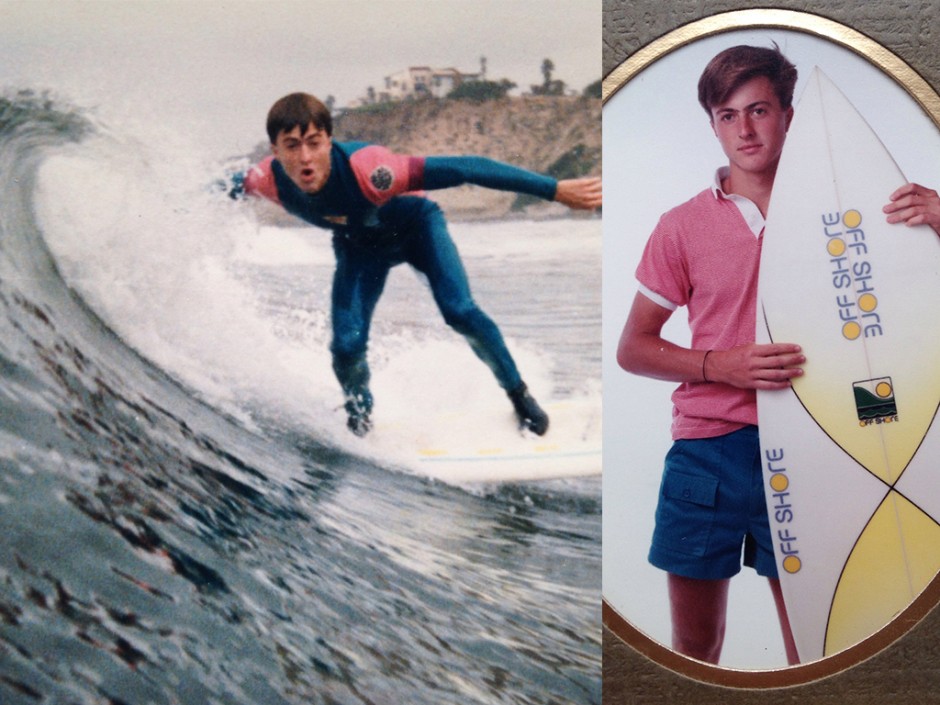
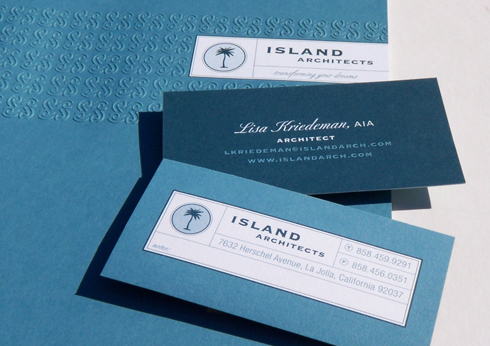
by davidlecours | Dec 12, 2013 | Branding, Strategy

I’m delivering a national webinar on Jan. 21 for Society for Marketing Professional Services (SMPS) about rebranding A/E/C firms. Below is my pre-webinar interview with SMPS on this topic.
How does a company or organization know when it’s time for rebranding?
The time to rebrand is when your firm is known for what it used to be, not what it aims to be. Island Architects used to be known for designing traditional homes. In 2008, we designed a brand identity update to reflect their aim to also be known for contemporary architecture. A brand audit and/or perception study can help a firm decide if/when to rebrand.

How would you define a “˜tired’ brand?
A tired brand doesn’t reinvest in itself. A tired brand looks, feels, and sounds dated. A tired brand isn’t aligned with the strategic direction of the firm.
What companies and organizations have you helped when it comes to rebranding?
Our firm, LecoursDesign has a narrow focus of brand consulting for the Architecture/Engineering industry. A few branding clients have included Tucker Sadler Architects, International Parking Design, Vasquez Marshall Architects, MA Engineers, Schmidt Design Group, Kirkpatrick Architects,BSE Engineering, Island Architects, SMPS San Diego and USGBC San Diego. Some of these are viewable here.
Can you describe a successful rebranding project you were part of?
I sat next to Glen Schmidt, Principal of Schmidt Design Group at the firstSMPS luncheon I attended. He mentioned an impending 20th anniversary and rebrand for the firm. After being hired, I first helped refine a new brand positioning of “balancing artistic expression in design with environmental sensitivity.”
After presenting new logo design explorations, Glen asked me to duplicate my presentation to the entire firm. This was a smart move because rebranding requires change, which employees and stakeholders often resist. By sharing the thinking behind the new logo explorations, the entire firm felt part of the process. Employees shared their opinions, but the Principals made the final decision on which logo to refine. The new logo led to a new color and typography palette as part of a brand style guide.
I suggested a 6″ square gift book for attendees at their 20th anniversary party, and to have a marketing life beyond the party. I designed a 48-page book titled 20 Years of Service, 20 Lessons Learned. The lessons fell into one of three themes: life, work, and design. A Schmidt Design Group client told Glen that she keeps the book on her desk. If she’s having a bad day, she looks through it for inspiration. This is when I knew the project was successful.


What do you like most about working on branding projects?
I tell clients “Don’t try to be different. Simply acknowledge that you already are (different).” It’s gratifying to help firms clarify who they are and what makes them most relevant to prospective clients. Marrying this strategy with creative expression becomes real when a client is incredibly proud to hand out their new business card.
How involved is the client during a branding project?
Clients involvement in brand research and planning is essential because they know their business best. A good branding consultant asks the right questions, gains consensus on the problem to solve, and guides the client in decision making. After research and planning, the best clients trust their branding consultant to present great creative solutions.
How is rebranding different with A/E/C firms than with other professional services or product-based companies? And, will you provide insight into this during your webinar?
Rebranding A/E/C firms and other professional services firms is similar if the firms are business-to-business (B2B). Product-based companies are often business-to-consumer (B2C) and the process is different. We’ll discuss this in the webinar.
What would be the biggest takeaway for people attending your webinar?
Attendees will learn WHY to rebrand, WHAT a rebrand project really involves, and HOW to manage a successful rebrand.
Rebranding Your Firm: Why, What and How Webinar
January 21, 2014 at 2:00 PM EST, 1:00 PM CST, 12:00 PM MST, 11:00 AM PST
Your firm should continually grow its expertise and capabilities. In the last 5″“10 years, you probably added new markets and new services. You may have an entirely new strategic direction. Is the public perception of your firm keeping up, or is it stuck in the past? It could be time for a rebrand.
Rebranding is not a panacea. But done well, it can energize a tired brand. All A/E/C firm brands go through a life cycle. So it’s nearly guaranteed that, at some point in your career as a firm owner or marketer, your firm will go through a rebrand. From gaining Board of Directors’ approval, to budgeting, managing the process, managing expectations, and rolling it out, this is a delicate process. Just ask Yahoo, The Gap, and UPS.
This webinar will help you navigate the process of why (or why not), what, and how to complete a successful A/E/C firm rebranding.
During this Webinar, you will learn to:
- Assess why and when a firm should consider rebranding
- Clarify the confusion among rebranding, refreshing, and simply designing an anniversary logo
- Navigate the process and allocate the resources (time and budget) required for a successful rebrand
- Evaluate the pros and cons of hiring an outside consultant
- Gain a realistic expectation of the ROI of a rebrand
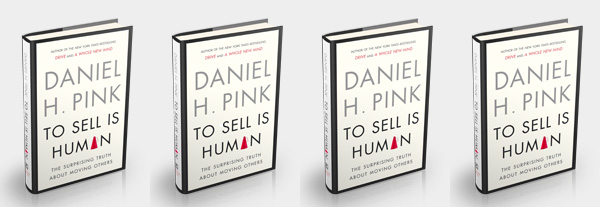
by davidlecours | Oct 15, 2013 | Experience Marketing, Story, Strategy

I recommend To Sell Is Human by Daniel Pink to anyone in the A/E/C industry because, as the book says, “we’re all in sales now.” Many A/E/C firms claim that “everyone in the firm sells,” but they rarely offer sales training. This book fills that knowledge gap, even for those that don’t think of themselves as salespeople.
This summary highlights the why, what, and how to apply the core concepts of the book.
WHY
1) Like it or not, we’re all in sales now.
2) Sales has changed more in the last 10 years than in the previous 100.
WHAT
ABC used to stand for Always Be Closing. According to Pink, ABC now refers to Attunement, Buoyancy, and Clarity.
Attunement “” The capacity to take someone’s view and calibrate your words and actions to match. Proposals and Presentation Interviews need to be attuned to our buyer’s challenges. If the RFP is written using specific language, then selectively adopt that language in your response to demonstrate an understanding of their challenges.
Buoyancy “” The capacity to stay afloat in “an ocean of rejection.” After pursuit losses, Pink recommends interrogative self-talk. During your next go/no go deliberation, interrogate yourself. Ask “can we deliver this project with excellence? If yes, then list the top 5 reasons why. Use these 5 reasons inspire your proposal and presentation.
Clarity “” Making sense in murky situations. Pink defines this as problem finding, then problem solving. Teams that win frequently make recommendations about potential project problems that the client hadn’t even considered.
HOW
Pitch, Improvise and Serve are how to apply the new ABCs of sales.
Pitch “” Summarizing the essence of your project pursuit into a memorable tagline or phrase can help your message stick. According to Pink, rhyming “taste great and goes down easily.” A great resource to help with rhymes isrhymezone”‹.com.
Story is another brilliant way to pitch. Story is memorable, powerful, and emotional. Big decisions are made on emotion, then later justified with fact.
Improvise “” To Sell is Human reminds us that there are three main rules in Improv. Hear offers, say “yes and,” and make your partner look good. Being a great marketer means being a great listener. Making your partner look good can be directly applied to presentation interviews. Not only are selection panels listening for what you say, but they also observe how your team interacts. Making fellow team members look good communicates that you will make your client look good.
Serve “” Pink reminds us to make our work both personal and purposeful while serving others. By understanding your client’s personal hopes, dreams. fears and insecurities, you will offer better solutions. Also, ask why a pursuit matters to you and your team. Then share your answers in proposals and interviews. If your purpose for pursuing a project improves quality of life or improves the world, then your team now has an inspired mission.
What’s your reaction when you think of a sales person? The terms most often used are “pushy, slimy, slick, obnoxious, etc.” This is the old model of sales, trying to convince buyers. Nobody likes to feel manipulated. To Sell is Human offers a new model. A model based on emotional intelligence, purpose and service. Since we’re all in sales now, it’s nice to know we can use our powers for good
















